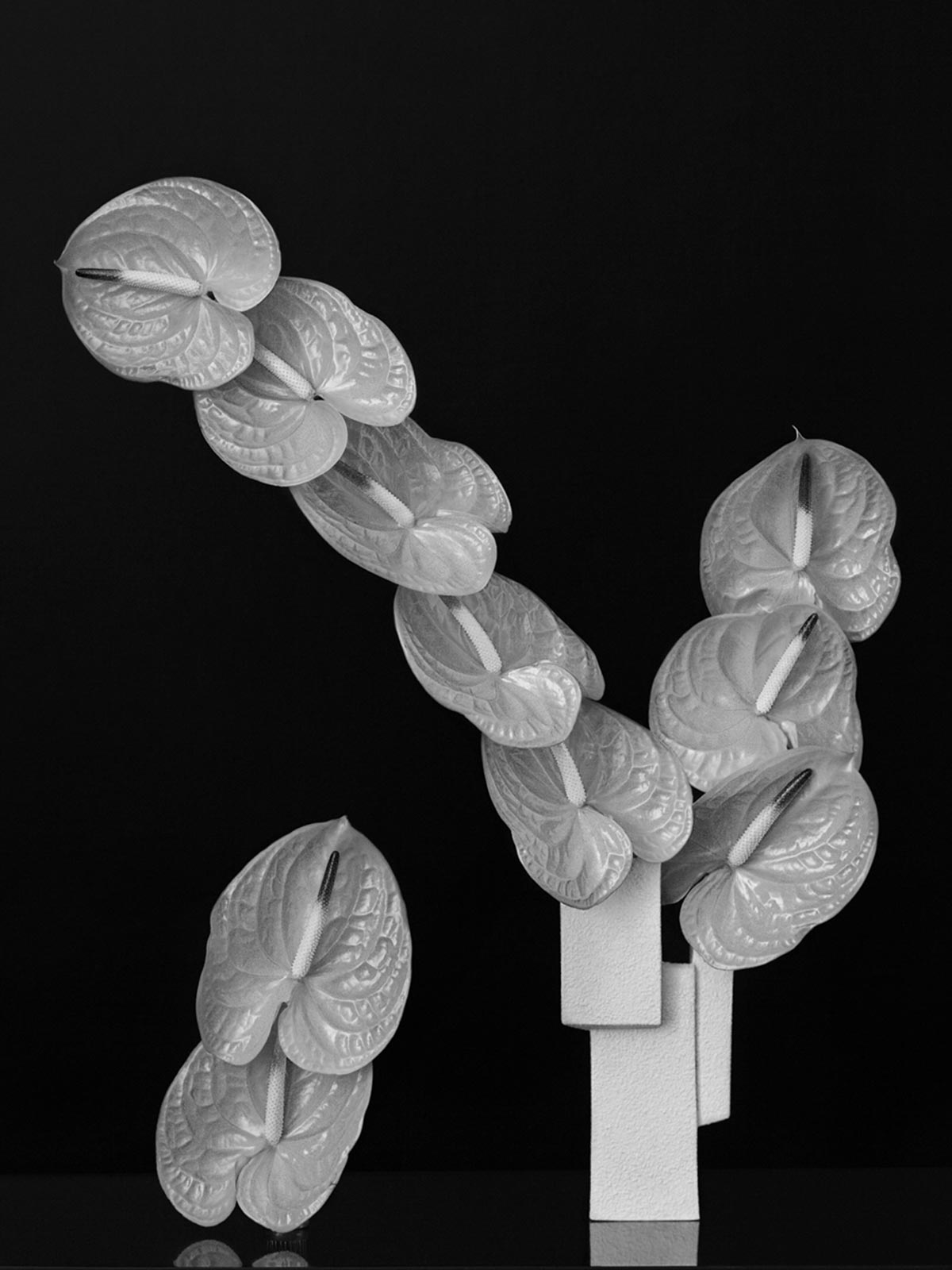For the art world, conversations are plentiful. Critics are nigh to always interested in learning how artists come to process and meditate on inspiration; designers continually navigate conflicting desires for both the surface transferability of immaterial culture and the purposefulness derived from materiality; and craftspeople are constantly defending their merit in the hierarchical structure of creativity. Marisa Competello, founder of Metaflora—one of New York’s most exciting floral design studios—occupies the very intersection of all of these vantage points. Her instincts were incubated over 10 years of assisting fashion stylists and a lifetime of dance studies, having never formally trained in design herself.
Derrick Gaitér—What is most gratifying to you about your pieces?
Marisa Competello—I’m grateful that people are appreciating my work. It was a leap to start this new business. I wanted to work with flowers because they’re so lovely. So quiet. Fashion was a little more hectic, so I’m glad I achieved something on my own that is peaceful and beautiful.
Above The Fold

Ludovic de Saint Sernin Debuts Eponymous Collection in Paris

Offline in Cuba

Georgia Hilmer’s Fashion Month, Part One

Escapism Revived: Backstage London Fashion Week Men’s Spring/Summer 2018
Derrick—Is there any particular knowledge that you find transferable between both worlds?
Marisa—Styling and floral design are very similar: They’re both about gathering things and putting them together; color and texture, and combining things you wouldn’t necessarily think go together. I’m still schlepping packages around—a gathering aspect very similar to styling.
Derrick—I imagine working with flowers is a delicate and perhaps more difficult process. What are some limitations to working with organic matter?
Marisa—There’s a limited amount of flowers; you never know what is going to be available on a day-to-day. Some days when I go to the market, I’m hoping they’ll have something in particular that they don’t. That can be challenging. Othertimes, things show up that surprise you and a design will take off based on what is available. In some cases, I want [the flowers] to do things that they can’t because they are too fragile. Lately, I’ve been playing with the limited color palette of flowers. I’ve been trying to use the painted varieties like blue or black—metallics are really cool. They are fun to mix in because they expand what’s naturally available.
Derrick—How important is it to embrace spontaneity in your artistry?
Marisa—I think being open to whatever idea comes to me and being inspired by what is available is when I create my most interesting compositions. Especially for editorial, [that mindset] allows me the opportunity to play and experiment; I’m able to do that also with my more regular clients. I have a nice balance of special requests and open-ended interpretations. I prefer the experimental aspect.
I don’t manipulate the flowers too much. I want them to go in their direction because I want them to be in their natural shape or form.
Derrick—Culturally speaking, certain flowers have particular significances, be it type, color, or meaning derived from moments in time. When you’re designing, do you find yourself reinventing new meanings among flowers with existing associations or negotiating what you perceive about a flower and what a client perceives?
Marisa—Luckily, what I do is so specific that when a client comes to me I mostly get to freestyle and interpret things in my way. I’m not quite sure if I’m limited to the meanings of flowers. I’m not using that many traditional flowers or using them in a traditional way, so I kind of feel like I avoid that scenario.
Derrick—A common theme in your work is an embrace of a very mathematical, linear order: use of many stems and leaves opposed to the actual blossom. What would you say gravitates you to these linear qualities?
Marisa—The linear aspect is my embrace of their natural movement and shape. I also prefer more minimalistic design. I’m much more of a less-is-more kind of person in all aspects of my life. I don’t manipulate the flowers too much. I want them to go in their own direction because I want them to be in their natural shape or form. I can’t help but relate my composition method to my dance background. I studied dance my whole life, and I still dance today, so that’s how I also see stylizations in my mind.















